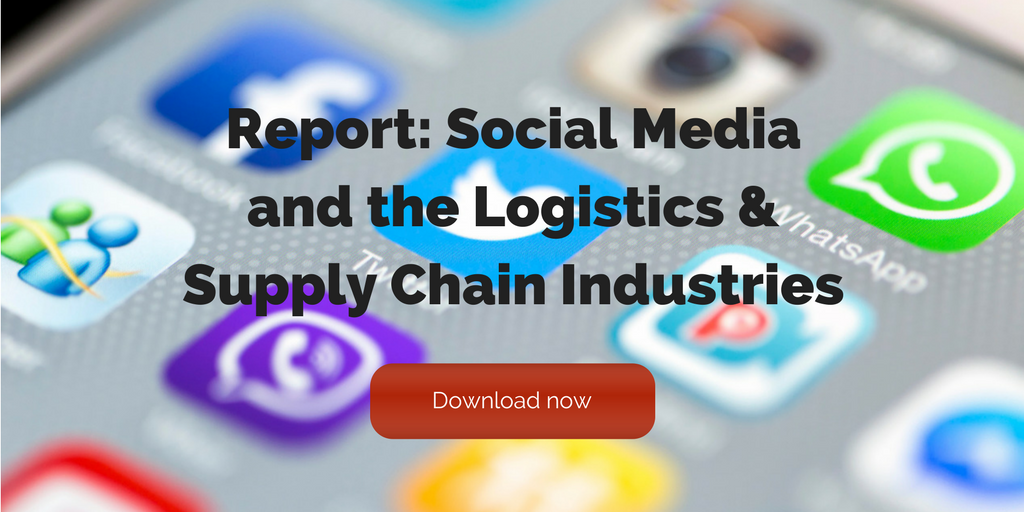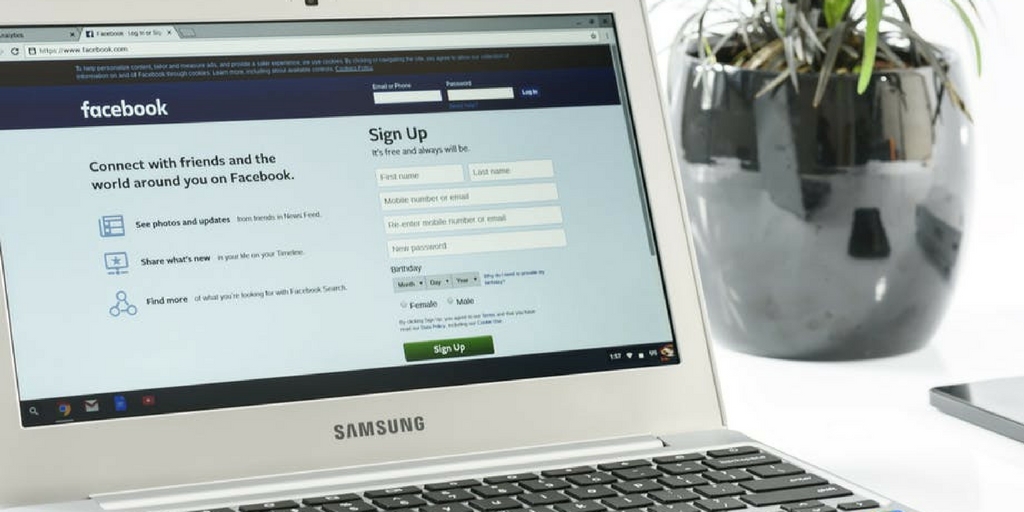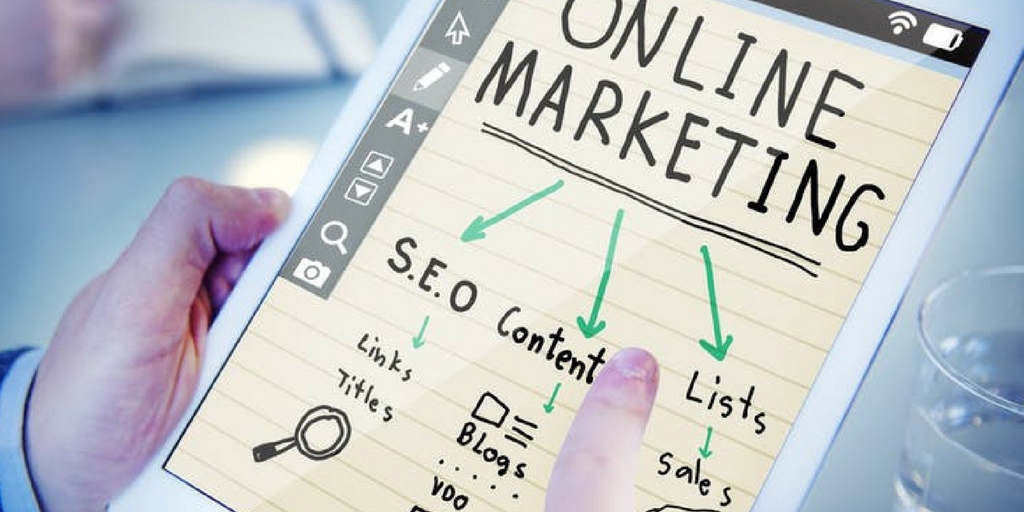
by Jennifer Hart Yim | Nov 14, 2017 | Blog, Current Events, Manufacturing & Distribution, Strategy, Supply Chain
No doubt 3D technology has transformed the world of business. There are numerous inspiring ways by which 3D technology has to reshape the future.
This post comes to us from Adam Robinson of Cerasis, a top freight logistics company and truckload freight broker.
If you are also instructed to learn about the impact of this revolutionary technology then you are at the right spot. Here are seven ways in which this new 3D trend will shape the future of manufacturing sector:
1. Boost Local Production
According to a recent survey based report it is come to know that 3D technology will allow the manufacturer to double the mass production level. It will enable the producers to reach their targets without increasing each unit production cost.
It will also reduce the shipment costs as a local manufacturer will no need to bring material from other countries. Instead, they could easily install 3D manufacturing plant in their own factory to cut the extra cost.
This way local business will easily boost their production process as well as reduce the cost of manufacturing.
2. More Customized Products
When you will engage 3D technology in the manufacturing process, you will get a chance to produce customized goods. It means that you could build everything from clothes to cars in a unique way.
According to a report, it is revealed that in coming years mobile users will get the opportunity to use 3D printing app.
In additional professional designers with also use 3D printing techniques to enter into the new age of industrial design. So, if you want to develop customized products to drive more revenue then you should use 3D printing method.
3. Best For Creativity
It is true to say that 3D technology is the best tool for creative lovers. This is because it enables manufacturer to open up new possibilities to grab the attention of more customers,
Many experts have predicted that the introduction of 3D technology will enable the creativity lovers to fulfill their every desire in an innovative manner.
Whether you want to design a phone or furniture mode, 3D technology will soon make it possible for you to accomplish your goals perfectly.
4. Avoid Copyright Issues
We all know the importance of copyrights to safeguard ones intellectual property. This is why businessmen hire lawyers to overcome a number of legal disputes that are rising due to copyright.
It is anticipated that 3D printing will secure the creativity of artists as everyone will hold ownership of their 3D design.
In case, you are also concerned because of the copyright issue then this technology will help you to overcome legal issues quickly.
5. A New Tool For Large-Scale Producers
Suffice to say that 3D technology is best tool for countries which are totally dependent on manufacturing industry. For instance, as China heavily depends on the manufacturing industry, 3D printing will enable China to target a huge domestic market.
In addition, it will also assist countries that are rapidly moving toward manufacturing sector. It gives them the great benefit to switch their operations to mass-manufacturing level all over the world. This strategy will benefit every growing economy to step in the next level in the coming future.
6. Build New Horizons For Every Industry
The 3D technology will revolutionize production process of every industry including the healthcare sector, education sector as well as food industry. The reason behind this is that scientists are working on 3D models that will facilitate every industry so that more people will take benefit from it.
From research, it is come to know that a popular hospital has printed a jawbone by 3D printer. If you also engage in health sectors then you will also find yourself building human body parts in a 3D manner. Many experts have also researched that 3D tools will also help to assemble chemical compounds and printing drugs.
7. Reduce Crime
It is predicted that new 3D technology will reduce the crime level. This is because people can keep guns that are made on 3D printers to secure themselves from criminals.
In addition, people can create CCTV camera and other 3D technology to catch the criminal in an easy manner. Moreover, it will also help in the production process of military equipment and chemical weapons.
Wrap-Up…
Therefore, it could be said now that 3D printing will offer uncountable benefits to small scales as well as the large-scale manufacturing industry to drive more revenue. If you also belong to the manufacturing industry then you should also tap into the potential of this superb technology.
Related posts:


by Fronetics | Nov 7, 2017 | Blog, Content Marketing, Data/Analytics, Marketing, Social Media
Use these four steps to determine which social media KPIs your business should be tracking to ensure you’re meeting your content marketing goals.
Whenever we create content marketing strategies for clients, we always tailor them to align with their specific business goals. So, for example, if a client is interested in getting more leads, we implement a plan designed to convert website visitors into contacts. And, equally importantly, we make sure lead generation is a metric we are constantly measuring.
Social media management is usually an important part of a comprehensive content marketing program. So, too, do we create a social media strategy specifically tailored to a client’s content goals. And this begins with establishing the right social media KPIs (key performance indicators) for those goals.
I wish I could give you a list of metrics that would work for every business. But, of course, it doesn’t work that way. Depending on what you’re looking to accomplish with your marketing plan, you’ll want to strategize, execute, and measure progress accordingly.
To get you started, here are four steps to help you decide which social media KPIs to measure based on your specific content marketing goals.
4 steps to determining your social media KPIs
1) Understand the difference between metrics and KPIs.
According to social media strategist and author of Going Social and Getting to Like Jeremy Goldman, “It’s completely normal to get metrics and KPIs mixed up to some extent.” Metrics, he says, “are simply measurements quantified,” while KPIs are “metrics that you’ve determined are mission critical to your business.”
Why is this distinction important? While we can measure more than ever before, sometimes too many measurements lead to a loss of organizational focus. In fact, Goldman suggests defining relatively few KPIs in order to maintain focus. “The more KPIs your organization has defined, the less focused it likely is.”
2) Define your business’ specific social media marketing goals.
In order to figure out the most relevant performance indicators, you need to establish and document a set of goals for your social media presence. Once you’ve done that, you can select metrics that help you analyze your progress.
For example, if you’re trying to get as many views as possible on your company’s white paper, your best KPIs are probably going to be visits to the lead-gen form connected to the white paper, as well as the total number of white paper downloads.
3) Start with the basics.
What is your organization’s mission statement; what is its reason for being? “It may sound like a lofty place to start,” says Goldman, “but you can’t succeed without an understanding of the firm and where it’s looking to go.”
Once you’ve got a clear idea of your brand and your company’s mission, make sure you have an understanding of your role within the context of the larger organization. Having an understanding of these basics gives you tools to focus on what serves the whole.
4) Survey your metrics.
Take a close look at all the metrics available to you, making sure not to assume everything is important. By the same token, don’t discount a metric that might not seem at face value to be important — be as objective as possible.
Next, you can determine your KPIs. “Break down your list of metrics and pick a few you’re determined to work night and day to measure your success by,” suggests Goldman.
Related posts:


by Fronetics | Nov 6, 2017 | Blog, Content Marketing, Marketing
Use these four tips to earn high-quality backlinks that will boost your company’s search engine ranking.
It’s no secret that backlinks can help your search engine rankings. Backlinks are any link on another website that points (or links) back to your website. Since the 1990s, search engines have used backlinks as a bit of a popularity contest: the more you had, the more popular your website became.
It didn’t take long for companies to hunt for backlinks, creating relationships with other companies in the same industry for the sole benefit of getting links to their websites. But like all relationships, link building can be abused and, often times, only beneficial to one party. Pursuing links for search engine ranking alone creates a negative mindset, leading to uneasy relationships, damaged brand reputation, and low-quality, spammy links.
How can you achieve high-quality backlinks?
Let’s start by understanding what constitutes a high-quality backlink. SEO consultant Mark Walters defines them as links that:
- Are from a relevant and trusted source
- Have anchor text that matches your keywords
- Are on a page with Google’s PageRank
- Are next to backlinks to authority websites
- Are from different sources
- Are not reciprocal
- Are on pages with few other backlinks
Now that you know what defines a high-quality backlink, how can your company achieve these organic relationships? The answer is hard work.
Here are 4 tips to help your efforts get high-quality backlinks.
1. Create the best content available on your topic
The best content is content that is unique. Not only is original content SEO friendly, original content is audience friendly. In one minute, users share 300 hours of video on YouTube and tweet nearly 400,000 tweets times. If you want content that stands out, you need content that differs from that of the rest of the pack.
You can make content stand out by using winning headlines, graphics, images, and with great writing. Create every single piece of content with your current and prospective customers in mind. Content that attracts and engages audiences effectively communicates valuable information, providing knowledge to help guide informed decisions. Creating reliable information will establish your website and business as a thought leader within your industry, and other companies will start to take notice.
2. Perform exclusive interviews with industry experts and/or influencers
The strategy of interviewing industry experts is becoming more and more common. Here at Fronetics we often interview influencers. The draw from big names helps bring in new traffic to our site, as well as provide readers with the latest happenings in our industry.
“The benefits of creating content around authority figures in your space is vast, such as bringing recognizable authority names to your site, while also having the opportunity for such content to be shared by featured experts as well. The end result could create lots of great content for your site, while also bringing in a nice consistent supply of new traffic as well.” Writes Zac Johnson for Business 2 Community.
3. Create custom infographics
Images are a fail-safe way to create engaging content, but infographics do more than just give readers visual knowledge. Infographics also help achieve backlinks. They provide interesting and valuable information using images, giving readers the knowledge without having to read through heavy text. The most popular infographics incorporate amazing design and well-researched statistics.
According to HubSpot, social media users share and like infographics 3x more than other any other type of content. Good infographics have the ability to make your content go viral, generate tons of high-quality back-links, and improve your site’s overall SEO.
4. Participate in collaborative content marketing
Collaborative content has many benefits, but one of the biggest is reach. Your collaborators have their own followers and platforms. Combine that with your audiences, and your content is already reaching more people. These collaborations save time and money and will earn you backlinks through the other participants. Collaborative content will help drive organic traffic, provide valuable and relevant information, and introduce a new voice to your content.
Using these four strategies will help your company earn high-quality backlinks and start improving your search enginge ranking. Your higher rankings will come from organic backlinks that your hard work helped to create.
Related posts:


by Fronetics | Oct 30, 2017 | Blog, Content Marketing, Marketing, Strategy
Relationships take time and trust to fully develop, and lead nurturing is no different.
Before I got married in 2009, I spent most of my twenties in the dating pool. I would meet someone. We would exchange phone numbers. And through a series of texts and calls, we would eventually meet for dinner. One dinner would lead to another and possibly another.
Lead nurturing isn’t all that different. When you first meet your lead, chances are they won’t be ready to purchase right away. In fact, 63% of consumers requesting info on your company today will not purchase for at least 3 months. But if you spend time establishing a relationship and building trust, the moment your lead is ready to purchase, you’ll be miles ahead of your competition.
As more and more buyers are engaging with brands before they are ready to purchase, an essential function of any marketing department is lead nurturing. That is, moving leads through the sales funnel by leveraging what you know about their needs and online behavior. Marketing software company Marketo describes lead nurturing as being “personalized, adaptive, and able to listen and react to buyer behavior in real time.”
Lead nurturing, like dating, takes time to establish a relationship and move toward the ultimate goal of converting from lead to customer. Here are five tips to help nurture these relationships.
5 lead nurturing tips
1. Make a good first impression
You would never go on a date without looking and feeling your best. The same should be true for your website, your company’s online home. As part of your preparation for a lead nurturing campaign, review your website and make any necessary modifications so that it presents the best digital representation of your business. Beyond increasing conversions, having an attractive, modern website that’s free of broken links and out-of-date contact information establishes your company as a trusted resource for information.
2. Make a plan ahead of time
Where are you going to dinner? Are you making a reservation? What are you doing after dinner? Preparing for a date requires some thought and planning, especially when considering your date’s preferences. Content selection requires the same forethought. The decision about what content you’ll offer your leads will be guided by the preferences and needs of your prospects. Create content that is relevant to your leads, and make sure to identify appropriate channels of distribution in order to extract maximum value from your content.
3. It takes time
Dating tends to happen in stages that occur over weeks and months. Similarly, the lead nurturing process is intended to push content to leads in a linear fashion, with the ultimate goal being that they’ll emerge as customers. Once you’ve moved past the first date, so to speak, you’ll want to decide how to continue romancing your leads. To do that, align content with where your leads happen to be in the buyer’s journey. Leads will enter and exit your lead nurturing campaign at different points, and that’s okay. Just be certain that your content is relevant to leads in their specific stage. Regardless, each nurturing touch should be focused and specific and include a call-to-action to promote advancement in the buyer’s journey.
4. Communication is key
As with any relationship, the foundation of lead nurturing is communication. Being able to hold meaningful conversations builds a genuine interest and helps improve any relationship. In other words, don’t view the lead nurturing process as a way to blast your prospects with promotional information or marketing materials; treat it as a dialogue. The best lead nurturing campaigns are designed to help you learn as much about your leads as you would have them learn about your company.
5. Show your interest and appreciation
We all want to feel appreciated, and the same is true for your customers and leads. Whether it’s by showing gratitude to current customers for their continued support or showing appreciation to leads for their download, saying thank you goes a long way in building connections and professional relationships.
In our personal and professional lives, we want relationships built on trust over time. A successful lead nurturing campaign is constructed on these same principals. When you plan ahead, don’t rush the process and create opportunities for meaningful communication, the possibilities are endless.
Want to learn more about lead nurturing? Check out these 30 tricks and tips that will change the way you nurture leads.
Related posts:


by Jennifer Hart Yim | Oct 12, 2017 | Blog, Data/Analytics, Logistics, Strategy, Supply Chain
Shippers should be tracking these last-mile metrics to drive down the high cost of last-mile logistics.
This post comes to us from Adam Robinson of Cerasis, a top freight logistics company and truckload freight broker.
Using technology to improve last-mile metrics is essential to driving last-mile costs down, but how do shippers know if the technology is helping or hurting? The answer to this question lies in using last-mile metrics to track key performance indicators and target levels of service to ensure accountability, visibility and continued reduction of costs in last-mile delivery.
A recent survey of customer service experiences, reports DC Velocity, revealed many retailers feel current technologies do not address their customer service needs, and as few as 3 percent of retailers cite full support as part of their current systems. Unfortunately, history teaches shippers that reducing costs means cutting customer service, but integrating customer service data into delivery operations and transportation systems is key to increasing a brand’s value. In fact, 72 percent of survey respondents believe it is very important to improve access to data for in-transit shipments, which includes last-mile delivery. Essentially, shippers need to track these 11 metrics.
1. On-Time Deliveries Are King of Last-Mile Metrics
The number of on-time felt or late deliveries are more important than any other metric tracked in last-mile logistics. These metrics provide a quick yes or no analysis of the effectiveness of your last-mile logistics strategy.
2. Fuel Consumption Rates
Last-mile metrics involving fuel consumption rates can vary and depend on the preference of the company, but how fuel consumption rates are calculated can greatly influence whether a driver is saving or wasting fuel.
For example, overall fuel consumption costs may be lower, but interval-based fuel consumption rates could show consistent, stopping and starting patterns that do not coincide with existing routes and drive up fuel costs. As a result, fuel consumption rates should be calculated by averaging the total fuel costs per driver, all drivers, per delivery vehicle and per route.
3. Last-Mile Vehicle Capacity Used Versus Available
Last-mile logistics should also consider the capacity utilized against the available capacity in all last-mile delivery vans. This metric is calculated by dividing the available capacity by the total capacity. Excess available capacity rates allude to poor loading procedures or the need to consolidate routes. The same calculation is used to calculate capacity used, dividing the capacity used by total capacity.
4. Planned Versus Actual Mileage
Planned versus actual mileage last-mile metrics are calculated by dividing the actual mileage per vehicle, driver, or route by its own planned mileage. Higher actual mileage rates reveal problems with route planning or unforeseen detours to route schedules.
5. Driver Hours In-Motion and Stationary
In-motion and stationary driving hours are expenses in last-mile logistics, and, unless your company employs a fully autonomous and drone-assisted delivery network, stops are necessary. However, the amount of stops and hours of both in-motion and stationary position can help measure performance of drivers. Excess stationary hours or excess in-motion hours are calculated by dividing the total amount of time drivers spend on a route by the number of hours in motion and the number of hours stationary.
6. Cost Per Item, Per Mile, and Per Vehicle
Last-mile metrics should track the cost per item, per mile, and vehicle associated with a specific route and the company as a whole. As a result, shippers should average the total costs per item for a given route and for the company’s shipments over a set period. The same average process should apply to both mile and per vehicle metrics, too.
7. Number of Stops
Last-mile logistics and metrics should also track the number of stops per vehicle. This is important to monitoring fuel costs, but it can also allude to poor route optimization practices. In other words, vehicles with a high number of stops should be reevaluated for ways to improve route schedules.
8. Average Service Time
The average service time metric can be complicated because it involves different data to calculate, depending on the source of an order. Most commonly, it is calculated by dividing the total service time at the store by the total number of deliveries. In other words, what is the average amount of time spent per order between the store, the warehouse, and other pre-shipping processes?
9. Customer Complaints
The need to manage customer service and address customer complaints leads to another metric in last-mile logistics, reports Talking Points With Adrian Gonzalez. What is the total number of customer complaints, and how do they stack up against the total number of deliveries? This metric is calculated by dividing the total number of deliveries by the total number of complaints received.
10. Order Accuracy
Order accuracy is calculated by comparing the known inaccuracies of orders against all shipped orders. Since some consumers may never report inaccurate orders, it is difficult to track a specific order inaccuracy metric. Instead, shippers should track order accuracy rates by dividing the total number of shipped orders by the number of orders not subject to customer service disputes, calls or complaints.
11. Damage Claims
A final last-mile metric to track is also about problems with orders: damage claims. Shippers should track the number of incoming damage claims against the total number of shipments. This is calculated by dividing the number of damaged claims by the total number of shipments. The resulting value is the percentage of damage claims in decimal form.
Using Metrics, Shippers Can Improve Last-Mile Logistics
Metrics allow shippers to understand the ins and outs of last-mile logistics, and metrics provide a means of measuring the performance of last-mile logistics plans against actual processes and their associated costs. As a result, shippers can make changes to their operations to improve last-mile services through last-mile metrics, and knowing more about last-mile needs is key to providing more than just the standard last-mile delivery options.
Related posts:









